 At a glance
At a glanceExpert's Rating
Pros
- Handsome, IP65-rated design (dust-proof, water-resistant)
- Good 20Gbps performance
- Nice flat Type-C USB ribbon cable
Cons
- USB port plug tether is difficult to reinsert.
Our Verdict
The PNY RP60 might just be the best looking and best weatherized USB SSD we’ve tested. Performance is great in the grand scheme, but middle of the pack for 20Gbps
Best Prices Today: PNY RP60 20Gbps USB SSD
My first impression of the PNY RP60 and its unusual ribbon-like Type-C cable was… Wow, nice looking drive! Fortunately, my hands-on testing showed that there’s more to this book than its cover, making me feel just a tad less shallow. A tad…
Further reading: See our roundup of the best external drives to learn about competing products.
What are the PNY RP60s features?
The PNY RP60 is a USB 3.2×2, 20Gbps SSD that’s weatherized to the tune of an IP65 rating — i.e., it’s dust-proof and can keep out jets or sprays of water, rain. etc.
Measuring approximately 3.9-inches long, by 2.35-inches wide, by 0.4-inches thick, the RP60 weighs in at roughly 2 ounces. That’s very light given the size.
As I more than hinted at in the opening paragraph, I consider the PNY RP60 to be one of the better-looking external SSDs I’ve laid my hands on. It’s jacketed in black silicone with geometrically styled grooves, sports a bold white logo, and offers a large hole for a lanyard. That jacket makes for a very firm grip, not to mention a pleasant tactile sensation.
The Type-C port on one end of the RP60 is covered by a captive plug, which no doubt contributes to the IP65 rating. Given the plug, you might even get away with the 3-foot submersion that an IP67 rating would allow.
I did have an issue with the plug, however. The tether is so flexible that it’s very difficult to guide it back into its receptacle. I had to grab it at the base using a pair of needle nose pliers to accomplish the task. Tweezers would also do, and if you have longer fingernails, you might have an easier time. A tiny drop of lubricant also helped.
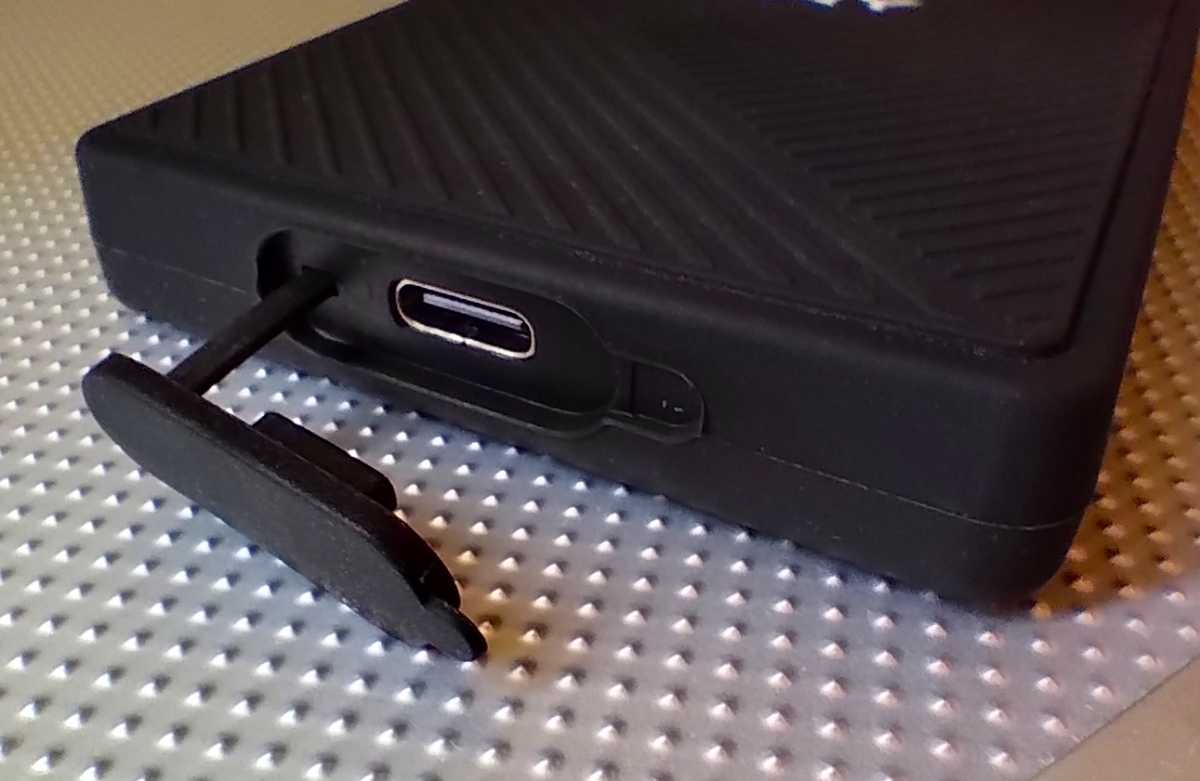
The downside to soft silicone is that it tends to collect micro-schmutz. So much so that I had to retouch these photos to make them palatable close up. From a distance, you likely won’t notice the harvested detritus.
PNY warranties the RP60 for three years, but didn’t provide us with the TBW rating that limits it — TBW is the terabytes that may be written before worn out cells can’t be replaced. Most TLC NAND SSDs these days are rated for around 600TBW per terabyte of capacity. As you’ll likely never touch that in a mere three years, don’t sweat it.
On the plastic tray in which the RP60 ships is a download code for Acronis True Image OEM, which you can grab when you register the drive at the company’s website. Admittedly, registration is a nuisance, but the software is a nice perk to facilitate backup chores.
How much does the PNY RP60 cost?
The PN60 is available in 1TB and 2TB capacities, for $100 and $180, respectively. The drive just arrived on the market so you may find it lower than that in a wee bit.
How fast is the PNY RP60?
Pretty darn fast would be the answer to that question. In some tests, the 1TB version that PNY sent us gave the mighty Crucial X10 Pro, a 2TB SSD, a run for its money.
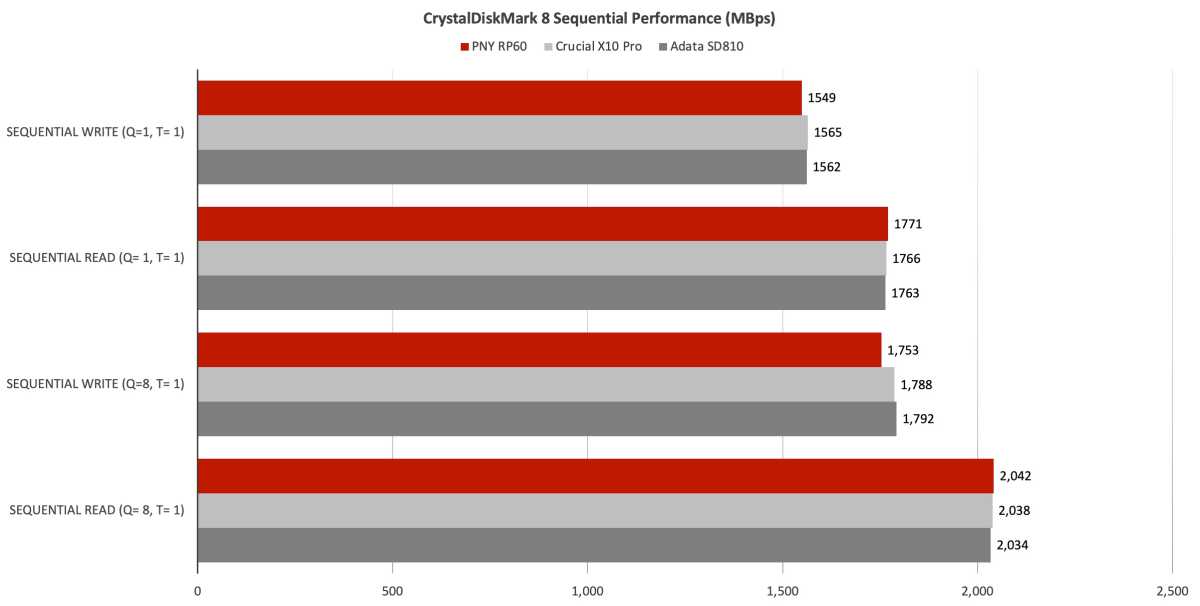
The PNY RP60 was a little behind the X10 Pro in the 4K tests, though it did manage to better the latter’s strange dip in the 32-queue read test.
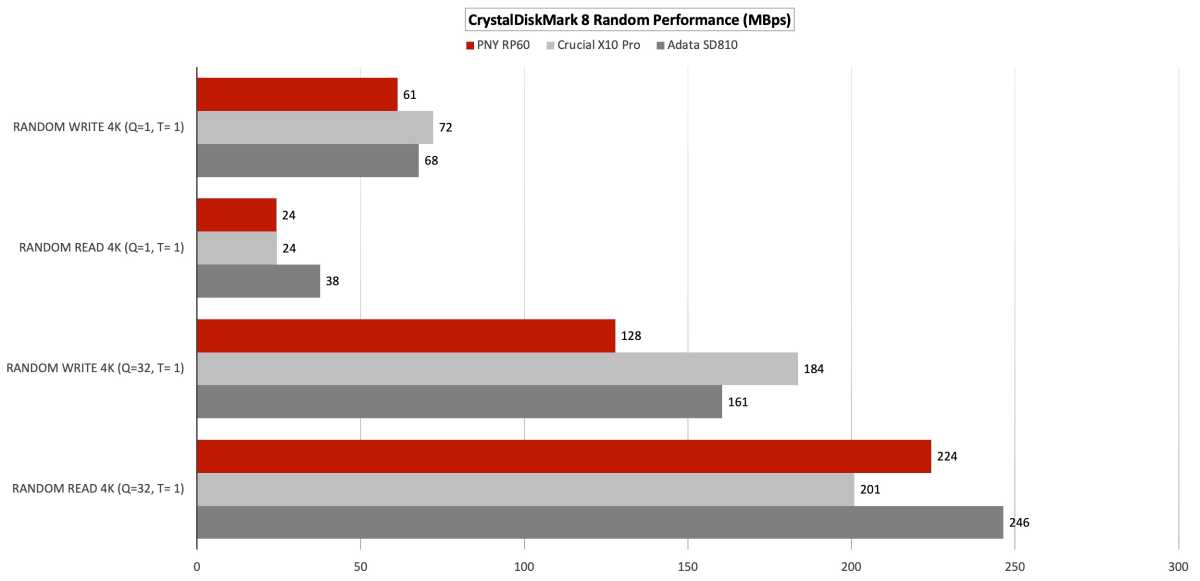
The RP60 fell well off, 45 seconds, the X10 Pro’s pace in the 48GB transfers. But so have most other external SSDs.
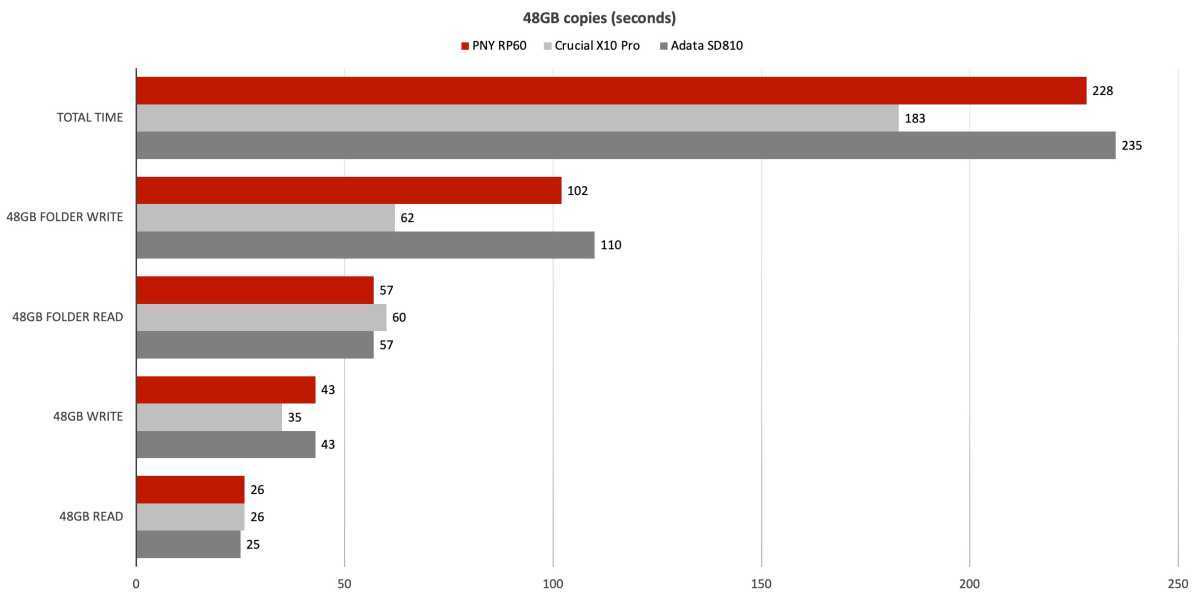
The RP60 lagged several minutes behind the X10 Pro in our 450GB write, but didn’t fall flat on its face as the Adata SD810 did. No doubt at least part of the difference was the RP60’s 1TB capacity while the Crucial X10 Pro was a 2TB drive. The latter simply had more NAND for caching.
In some tests, the 1TB RP60 gave the mighty Crucial X10 Pro, a 2TB SSD, a run for its money.
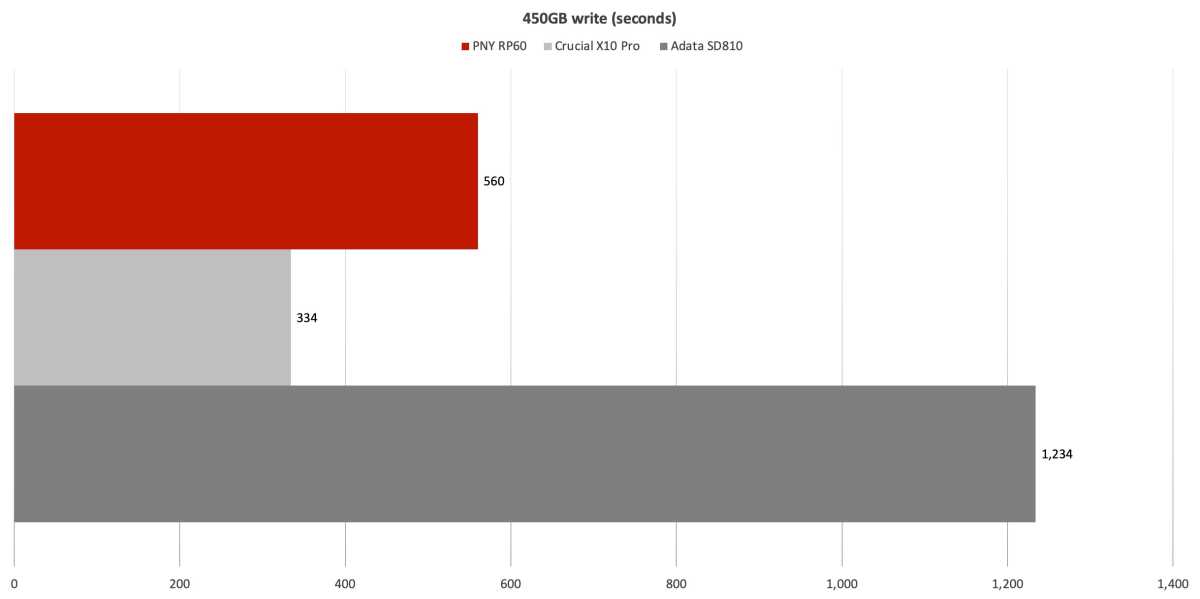
Below you can see exactly where the RP60 ran out of juice (cache). The initial dip was to around 900MBps, then to 539MBps. Drops during this test are a common phenomenon and show why we recommend as much capacity as you can afford. Two times as much as you think you’ll need, in fact.
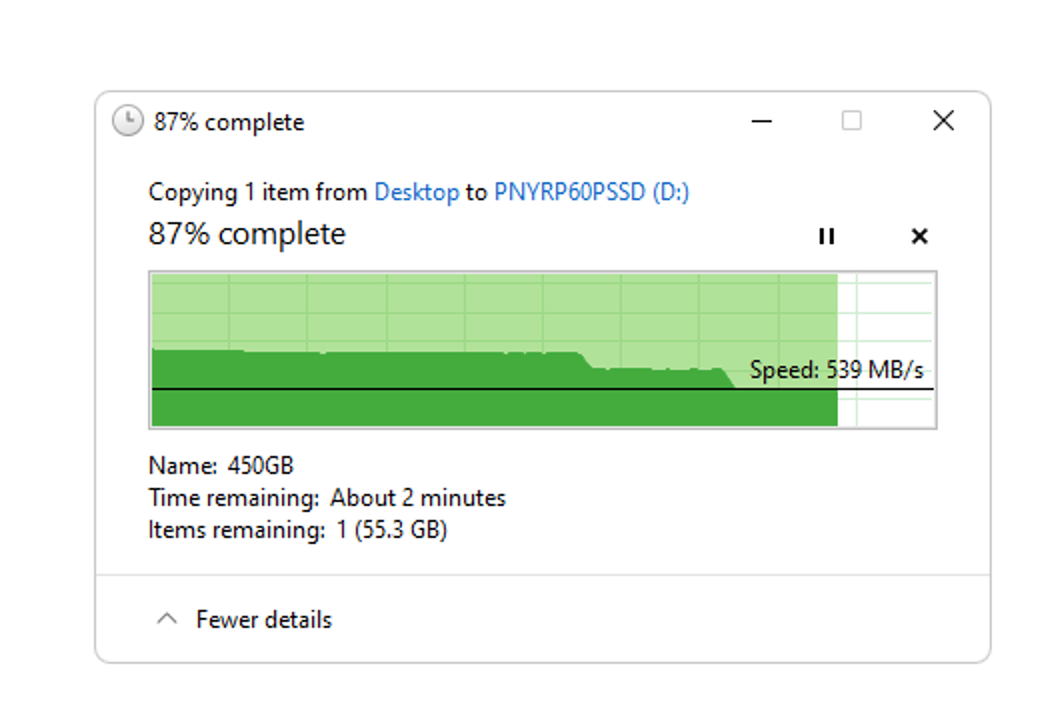
In total, the RP60 turned in an admirable performance. There’s no shame in losing to the number one SSD, though of course, you need to price compare when you go to purchase.
Should you buy the PNY RP60?
I like the size, I like the looks, I like the feel, and I like the weatherizing (other than the fiddling plug). The RP60’s also a good performer and probably even better in its 2TB iteration. Either way, nice job, PNY.
How we test
Storage tests currently utilize Windows 11, 64-bit running on an X790 (PCIe 4.0/5.0) motherboard/i5-12400 CPU combo with two Kingston Fury 32GB DDR5 4800MHz modules (64GB of memory total). Both 20Gbps USB and Thunderbolt 4 are integrated to the back panel and Intel CPU/GPU graphics are used. The 48GB transfer tests utilize an ImDisk RAM disk taking up 58GB of the 64GB of total memory. The 450GB file is transferred from a 2TB Samsung 990 Pro which also runs the OS.
Each test is performed on a newly NTFS-formatted and TRIM’d drive so the results are optimal. Note that in normal use, as a drive fills up, performance may decrease due to less NAND for secondary caching, as well as other factors. This is less of a factor with the current crop of SSDs with their far faster NAND.
Caveat: The performance numbers shown apply only to the drive we were shipped and to the capacity tested. SSD performance can and will vary by capacity due to more or fewer chips to shotgun reads/writes across and the amount of NAND available for secondary caching. Vendors also occasionally swap components. If you ever notice a large discrepancy between the performance you experience and that which we report, by all means, let us know.




